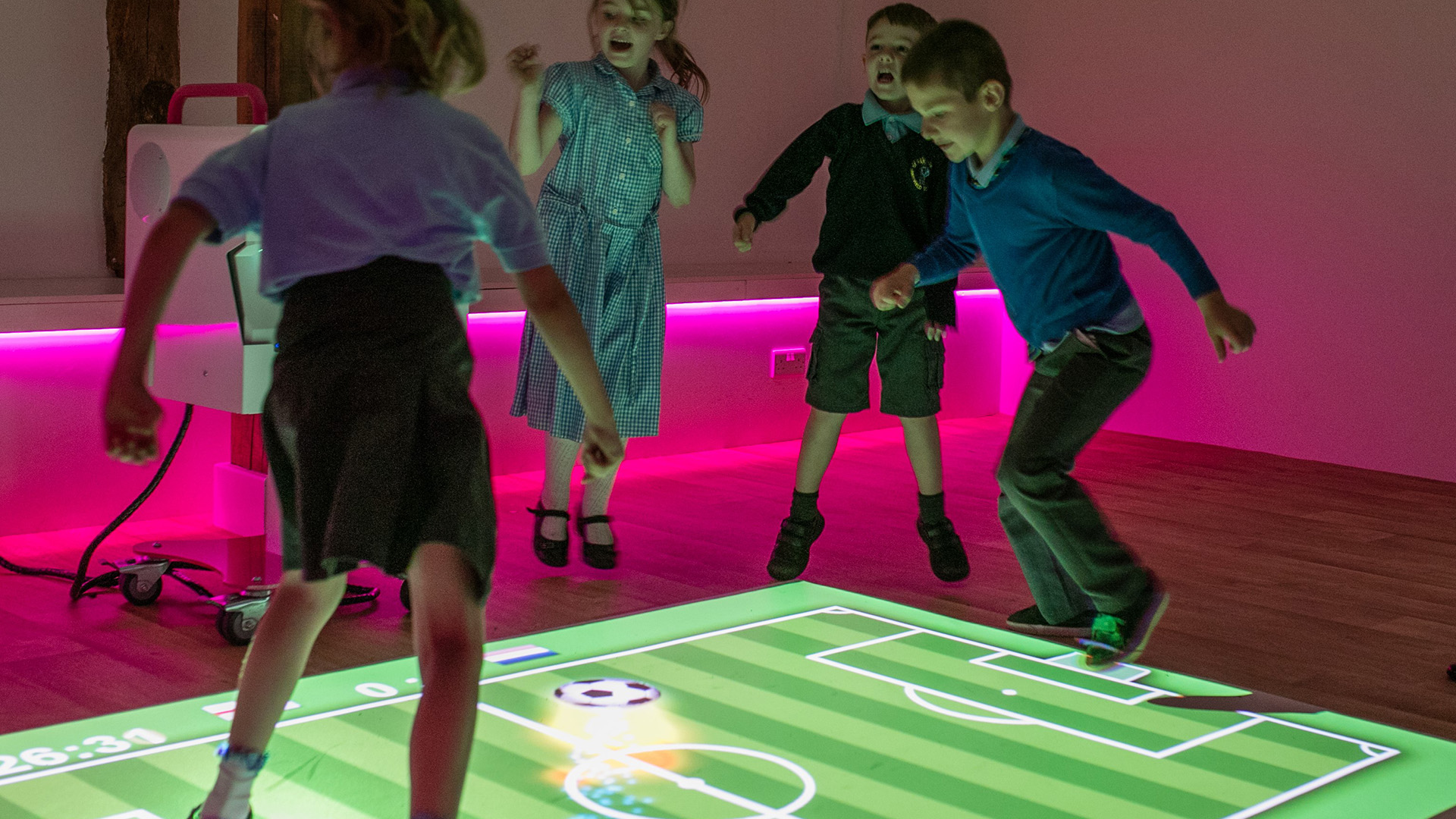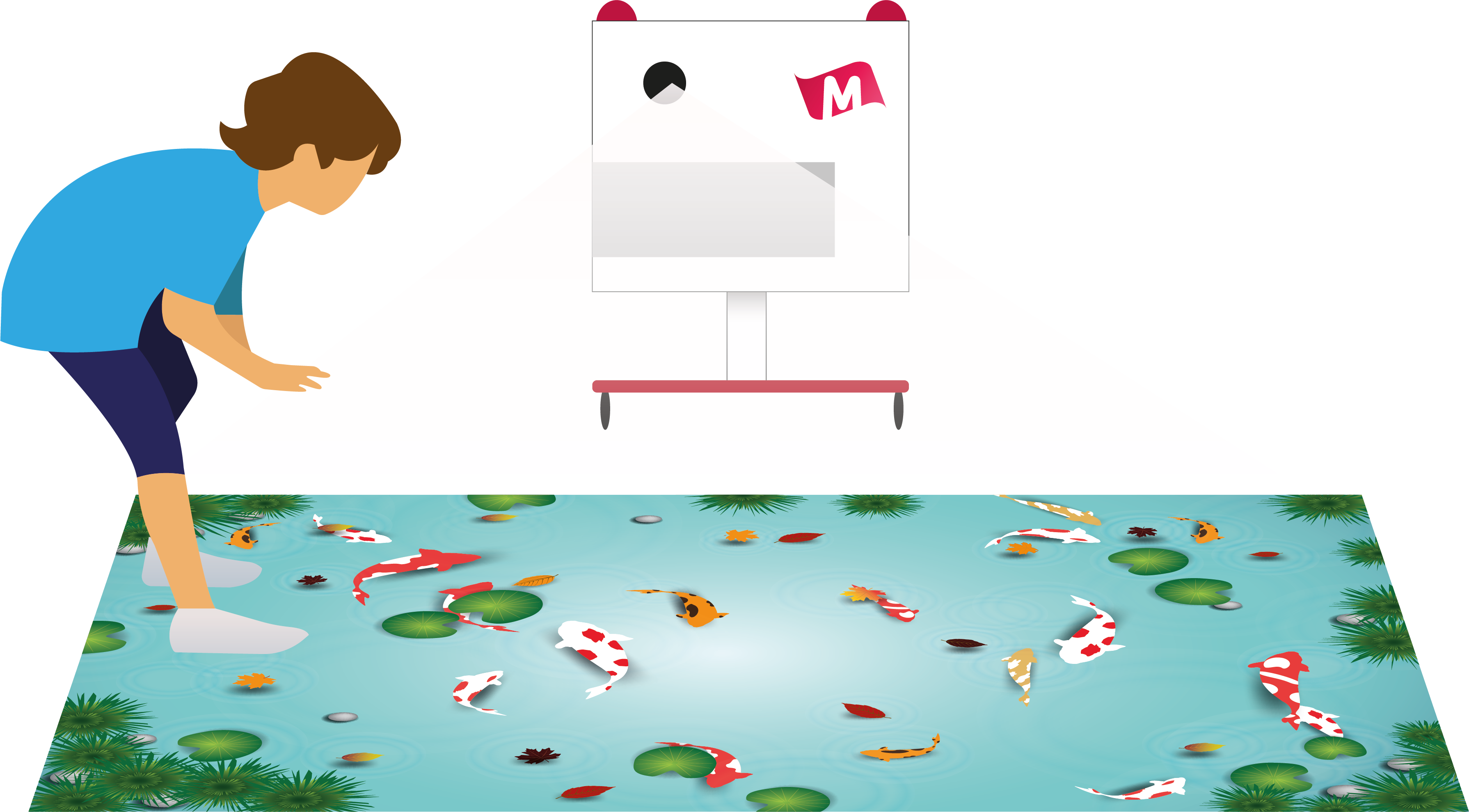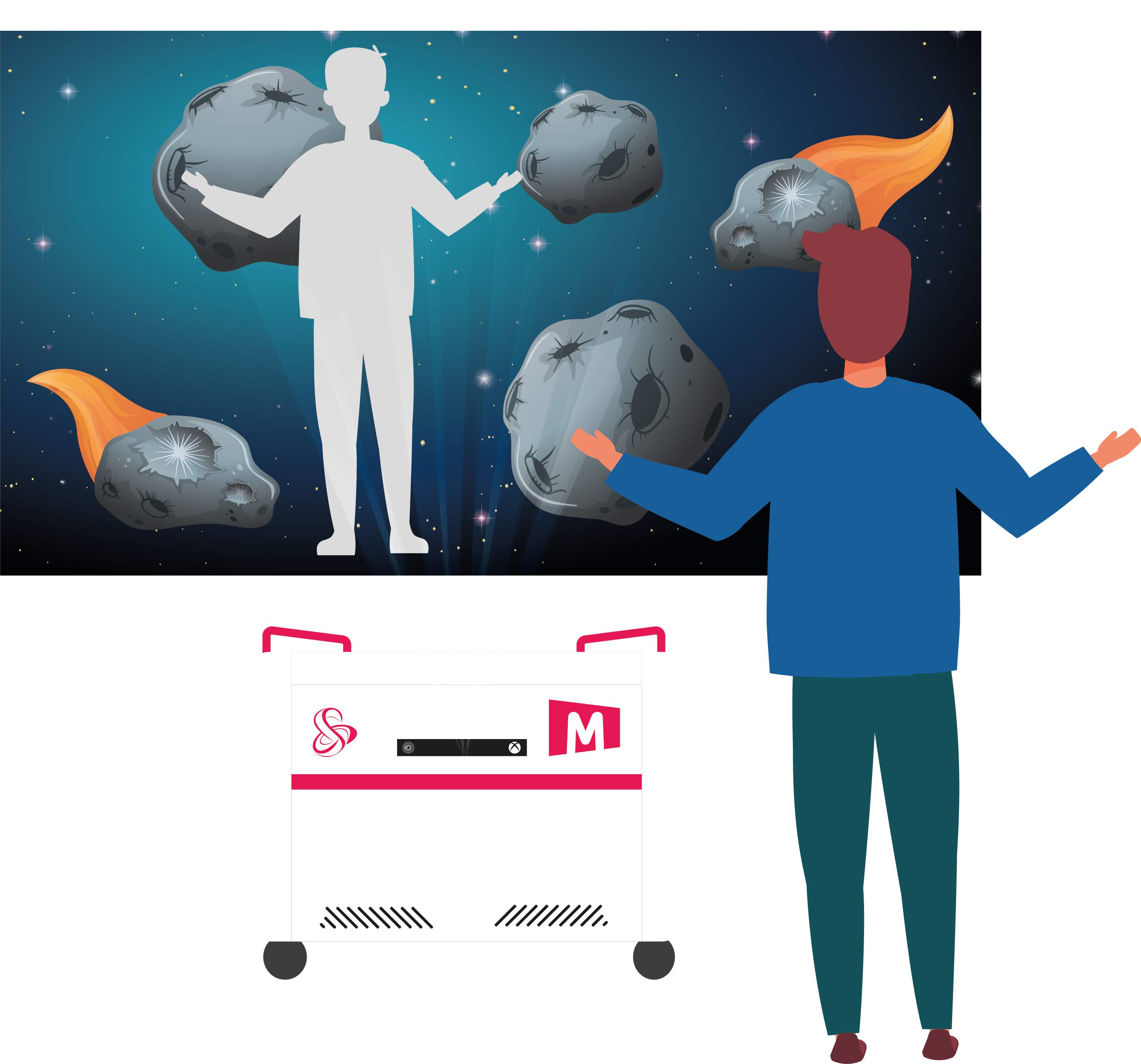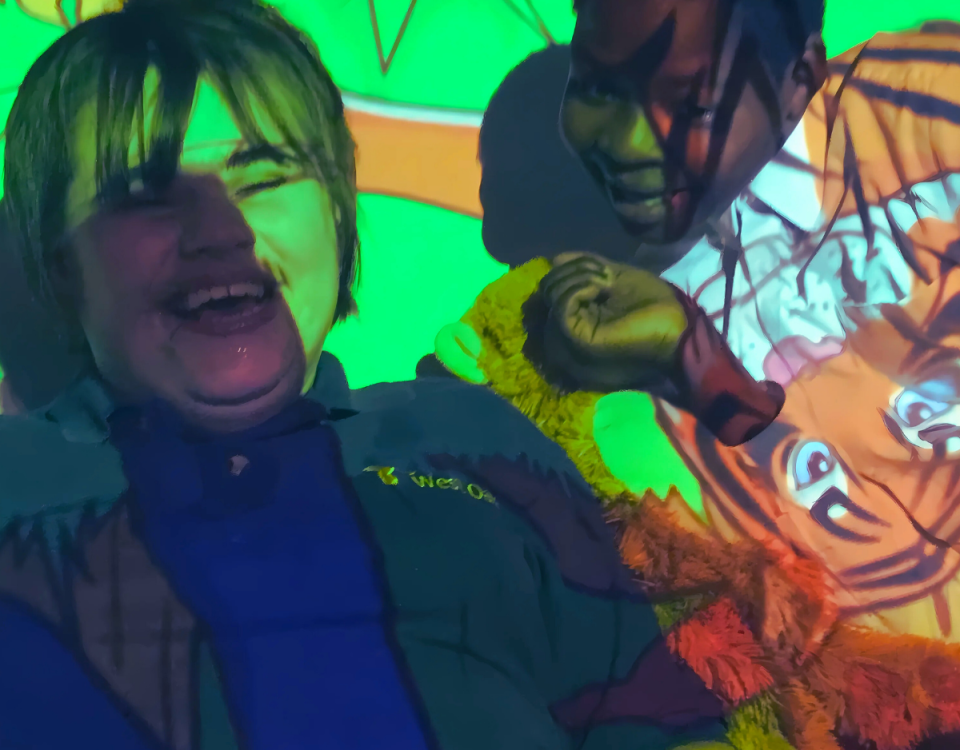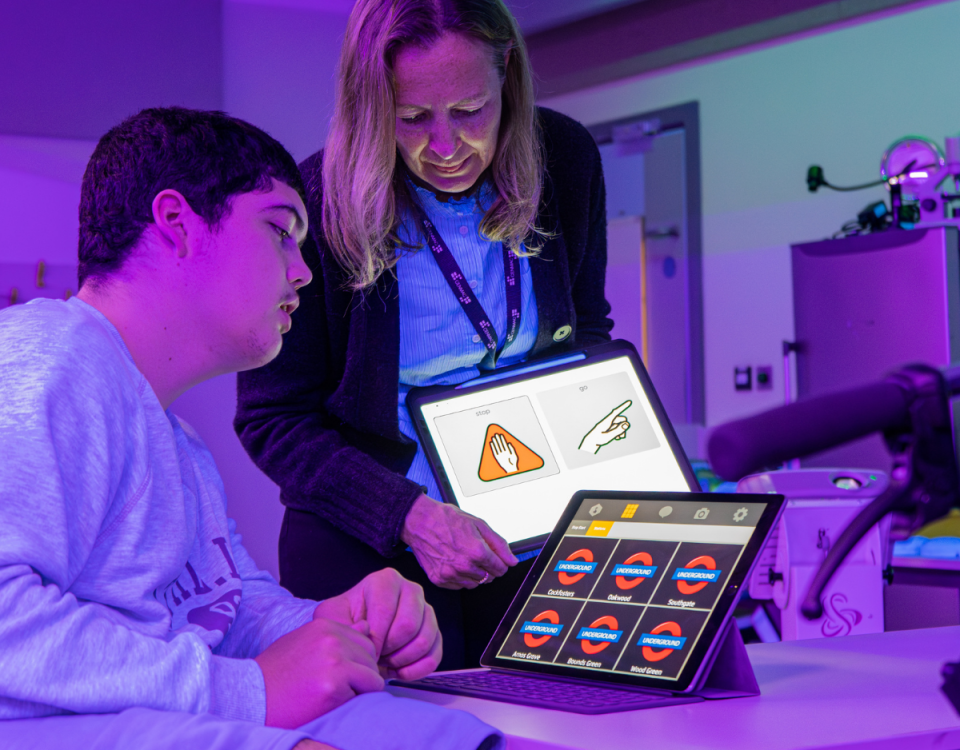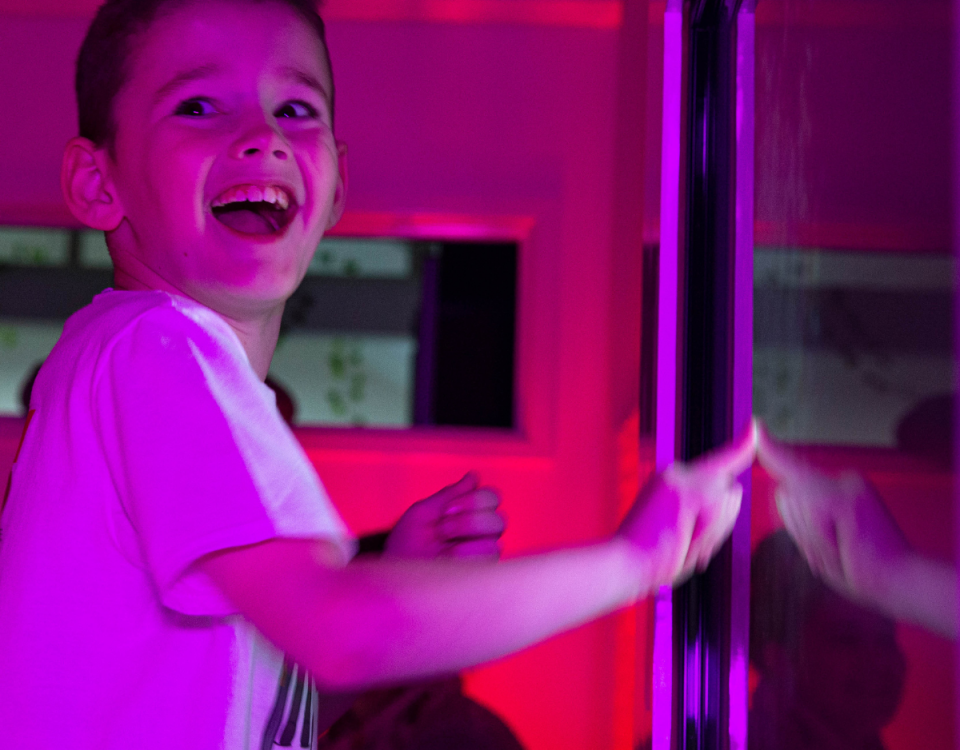
Understanding Strabismus and Its Impact on Vision: Insights from Lisa Donaldson
December 28, 2024
Understanding Cerebral Visual Impairment (CVI): Insights from Lisa Donaldson
December 28, 2024In eye tracking, fixations and saccades are critical concepts that help us understand how the eyes focus and move. Lisa Donaldson, Head of Eyecare and Lead Clinical Optometrist at SeeAbility, explains their significance and offers strategies to support children with complex needs who may struggle with these visual functions.
What are Fixations?
A fixation occurs when the eye focuses steadily on a specific target.
- For some individuals, only one eye may fixate effectively, while the other may be off-center or "squinting."
- In eye gaze activities, understanding which eye a child uses to fixate is essential to ensure the most accurate tracking and support.
What are Saccades?
Saccades are rapid eye movements that occur when shifting focus from one target to another.
- Saccades require at least two visual targets to direct attention.
- Developmental challenges can make it difficult for some children to perform quick and accurate saccadic movements.
Challenges for Children with Complex Needs
Children with complex needs often face difficulties with fixations and saccades:
-
Inaccurate Saccades
- They may overshoot or undershoot the target.
- Head movements are often used to compensate for eye movement limitations.
-
Slower Response Times
- It may take several seconds for the child to move their eyes to the target.
- Facilitators moving too quickly to the next task can leave the child one step behind, causing frustration.
Strategies to Support Fixations and Saccades
1. Allow Extra Time
Facilitators can adapt their approach by allowing sufficient time for saccadic movements:
- Count to eight seconds after presenting a target to give the child space to complete the movement.
2. Minimise Distractions
- Limit peripheral clutter and visual distractions to help the child focus on specific targets.
3. Observe and Adjust
- Identify which eye the child uses for fixation and adjust the setup accordingly.
Fixations, Saccades, and Visual Resolution
The resolution of what we see depends on whether the eye is stationary or moving:
- Fixations: When the eye is stationary, the macula—a part of the retina with a high density of photoreceptors—produces a high-resolution image. This is essential for 20/20 vision.
- Saccades: During eye movement, the retina captures a lower resolution image.
For children with nystagmus (uncontrolled eye movements):
- They cannot steady their eye to direct the macula onto a target.
- As a result, their vision lacks the high resolution achieved during fixation.
Key Facts
- Fixations: The eye focuses on a specific target.
- Saccades: The eyes move rapidly between targets.
- Complex Needs: Children with developmental challenges often struggle with saccadic accuracy and speed.
- Resolution: The macula must fixate steadily for the most detailed vision; eye movements reduce resolution.
Final Thoughts
Understanding fixations and saccades is vital when working with children with complex needs. By tailoring strategies to support their visual processing and allowing extra time for eye movements, educators and therapists can enhance their engagement and success in visual tasks.
For more information on vision care and strategies for children with complex needs, visit SeeAbility.


